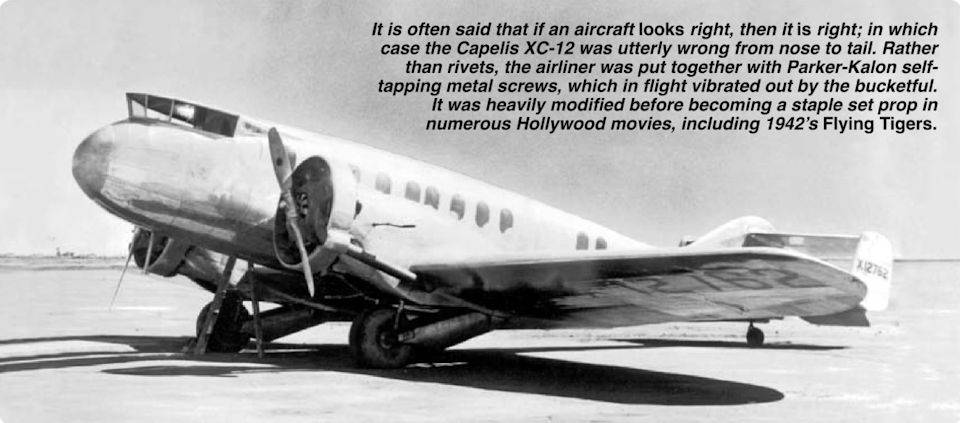
Flight, November 1933
THE CAPELIS COMMERCIAL MONOPLANE
AMERICAN aircraft operators have shown a pronounced partiality of late for high-performance 12-14 seater aircraft. The past few months have seen the production of the Boeing 247, Douglas D.C.I, and Lockheed "Electra" low-wing monoplanes. High speeds are obtained in these machines by exceptionally clean aerodynamic design, retractable undercarriages and the use of the latest types of geared and supercharged American radial engines with low-drag cowlings and new types of variable-pitch metal airscrews. Safety and noise reduction have also received special attention. The newly-formed Capelis Safety Airplane Corporation, Ltd., of Oakland Airport, California, has produced an addition to the range of the aforementioned types, and details, which we are able to publish through the courtesy of Shell Aviation News, are given hereafter, as follows:- The machine is a twelve-passenger, all-metal low-wing monoplane with a fuselage of full monocoque construction. Two 550-h.p. Wright "Cyclone” engines are fitted to the first machine, but other power units of similar type may be used if desired. The junction of wing and fuselage is "cushioned" with rubber to absorb vibration, and the two structures may be separated by the removal of a few bolts. Landing gear of ingenious design is employed, the two main wheels and the tail wheel being either manually or electrically retracted. They are automatically lowered when either of the throttles is closed. When the wheels are "up," the rear undercarriage struts form streamline fairings behind the small portions of the wheels which protrude below the wing. A slight variation of the camber of the trailing edge of the wing may be made to obtain longitudinal balance. Frise ailerons are fitted for control at low speeds, and the two rudders are placed one behind each engine to obtain the full effect of the slipstream. “Sandwiched" between the double walls of the cabin is sound-absorbing material, and safety glass is used throughout. Ventilation is controllable from each seat. The petrol tanks are carried in the lower part of the fuselage, and may be dropped in an emergency. At a gross weight of 8,000 lb., the machine has an estimated cruising speed of 200 m.p.h., the top speed being 230 m.p.h. and landing speed 63 m.p.h.
- Flight, November 1933
THE CAPELIS COMMERCIAL MONOPLANE
Фотографии
-
Aviation Historian 14 / M.O'Leary - Magical Mystery Tourer
Регистрационный номер: X12762 [5] It is often said that if an aircraft looks right, then it is right; in which case the Capelis XC-12 was utterly wrong from nose to tail. Rather than rivets, the airliner was put together with Parker-Kalon self-tapping metal screws, which in flight vibrated out by the bucketful. It was heavily modified before becoming a staple set prop in numerous Hollywood movies, including 1942’s Flying Tigers.
-
Flight 1933-11 / Flight
Регистрационный номер: X12762 [5] A NEW AMERICAN AIR LINER: The Capelis all-metal commercial monoplane.
-
Flight 1934-02 / Flight
Регистрационный номер: X12762 [5] FLYING PORTHOLES: Side view of the new transport plane manufactured by the Capelis Safety Airplane Corporation of Oakland, California.
-
Flight 1934-02 / Flight
Регистрационный номер: X12762 [5] CAPELIS DETAILS: Retractable undercarriage of the Capelis transport plane.
- Фотографии




